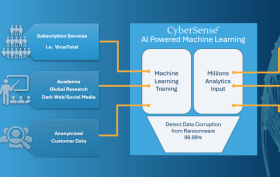Cisco Debuts Network Assurance Engine

Cisco today unveiled a network assurance engine that employs advanced analytics based on mathematical models and metadata to ensure networks based on its routers and switches continue to optimally run.
Based on a Cisco Network Assurance Engine capability developed internally, Cisco plans to make separate instances of this capability available for data centers, campus and branch network as well as wireless networks based on the Cisco Meraki platform, which it will call Meraki Wireless Health. Cisco Network Assurance is available now for both data center and campus branch networks now, while support for Meraki networks is due in April.
Announced at a Cisco Live! event, Cisco Network Assurance Engine works by applying mathematical models to how any network should be optimally configured. That data is then compared against historical data that Cisco collects as well to create recommendations for changes to how the network is configured to optimize performance. All told, Cisco has captured resolutions for over 5,000 scenarios that most commonly lead to network failures, says Prashanth Shenoy, vice president of product marketing for Cisco.
The goal is to eliminate the manual labor associated with managing networks today by capturing the original intent of the IT organization and then continually apply mathematical models to identify any deviations from the network and security policies set up by the IT organization, says Shenoy.
“It’s about eliminating lost productivity and downtime,” says Shenoy. “You can get to root of any problem immediately.”
That means rather than depending on the tribal knowledge of individual network administrators, IT organizations can now glean action insights via the Cisco Network Assurance Engine. It will then be up to each individual IT organization to determine to what degree they want a Cisco network to automatically implement those recommendations.
In addition to assuring network and security policies are being enforced, the Cisco Network Assurance Engine can also be employed to create what-if scenarios that enable network administrators to see how changes to those polices might impact applications, adds Shenoy. IT organizations can also employ Cisco Network Assurance Engine to discover the root cause of an issue by replicating a problem occurring in the IT environment says Shenoy.
Finally, Cisco also expects Cisco Network Assurance to cut time on the length of time it takes IT organizations to complete a network audit.
The Cisco Network Assurance Engine is tightly coupled to the Cisco Application Centric Infrastructure (ACI) SDN framework and Shenoy says this capability is intended to be a complement to the Cisco Tetration analytics software the company rolled out last year. Cisco says that nearly 200 IT organizations participated in field trials for Cisco Network Assurance Engine.
Cisco is introducing these new products to live up to its promised pursuit of intent-based networking (IBN), an approach that stratups such as Apstra Inc. popularized first. In fact, Apstra added intent-based analytics (IBA) to its portfolio last week. Cisco may not the first networking vendor to apply mathematical models as part of an effort to improve network performance and ensure availability, but given the scale of Cisco's installed base, the reach of the Cisco Network Assurance Engine may now make predictive analytics a more common tool in enterprise networks -- and help expand the market.



















